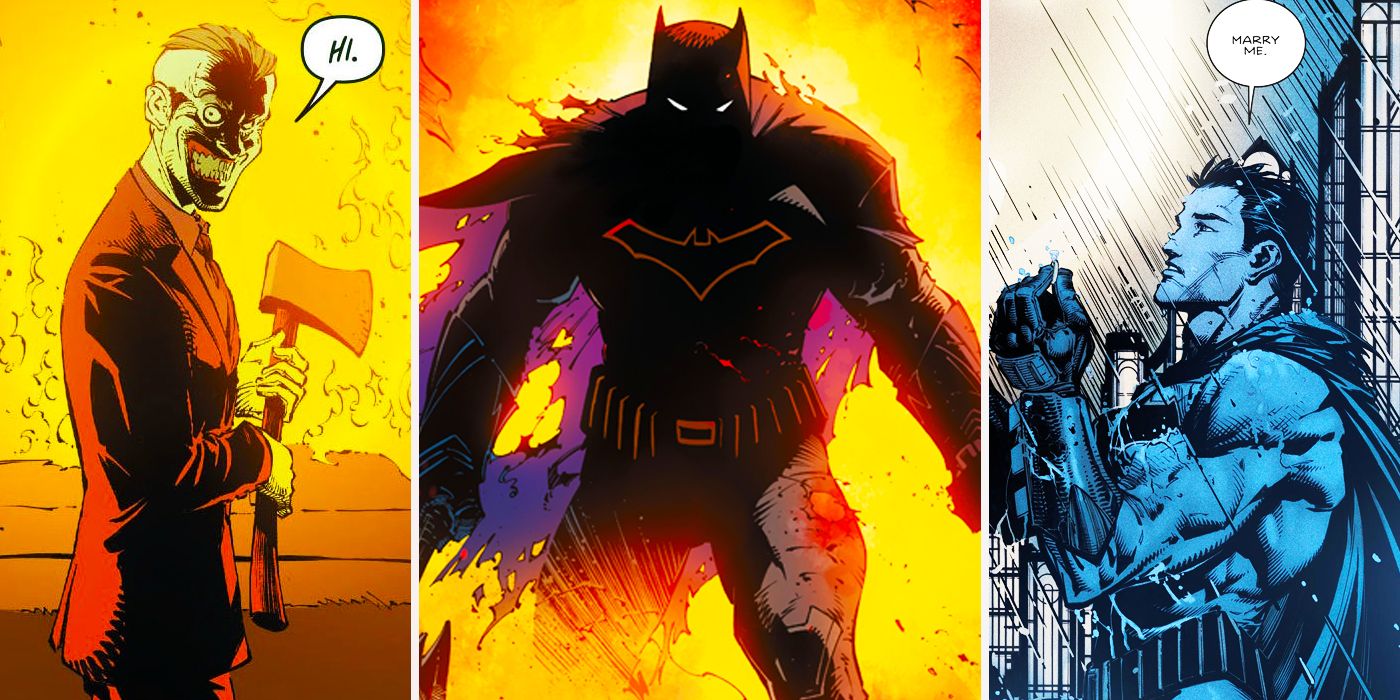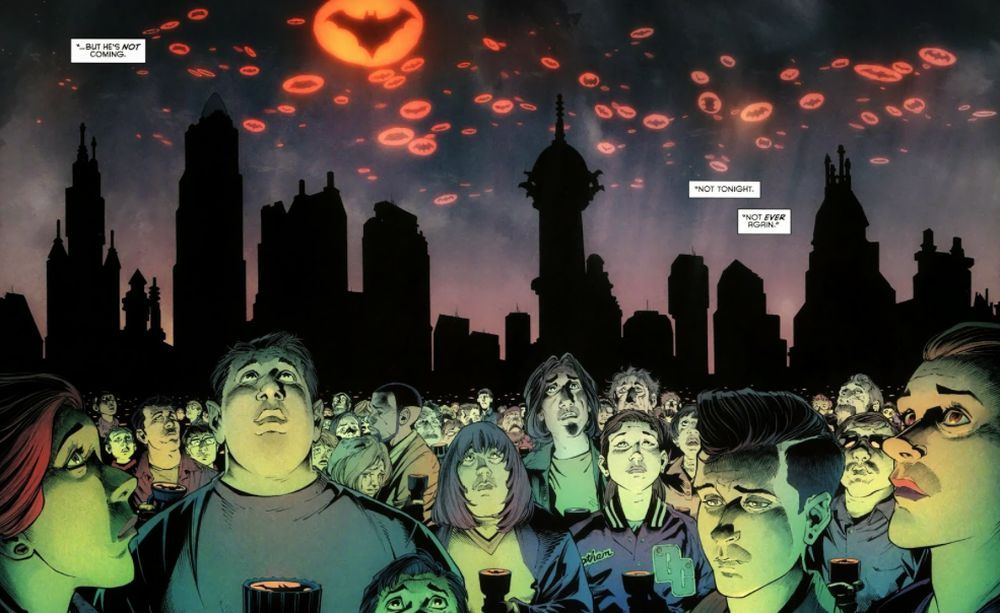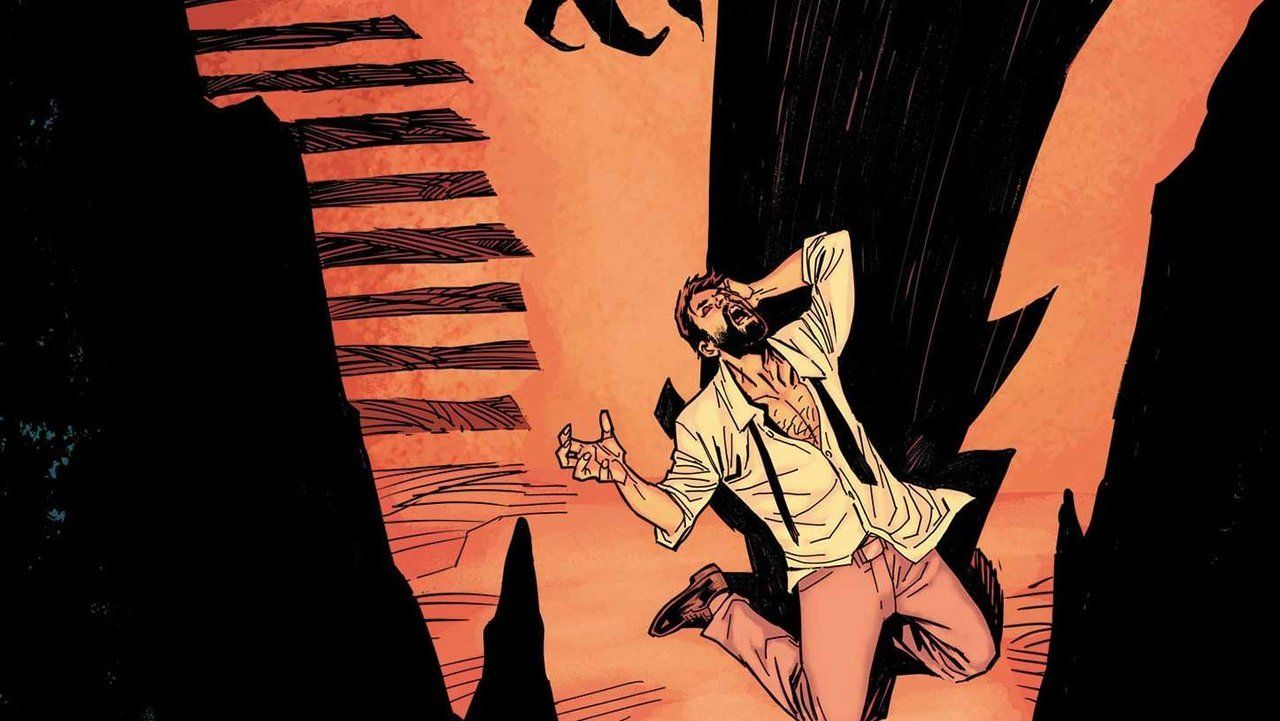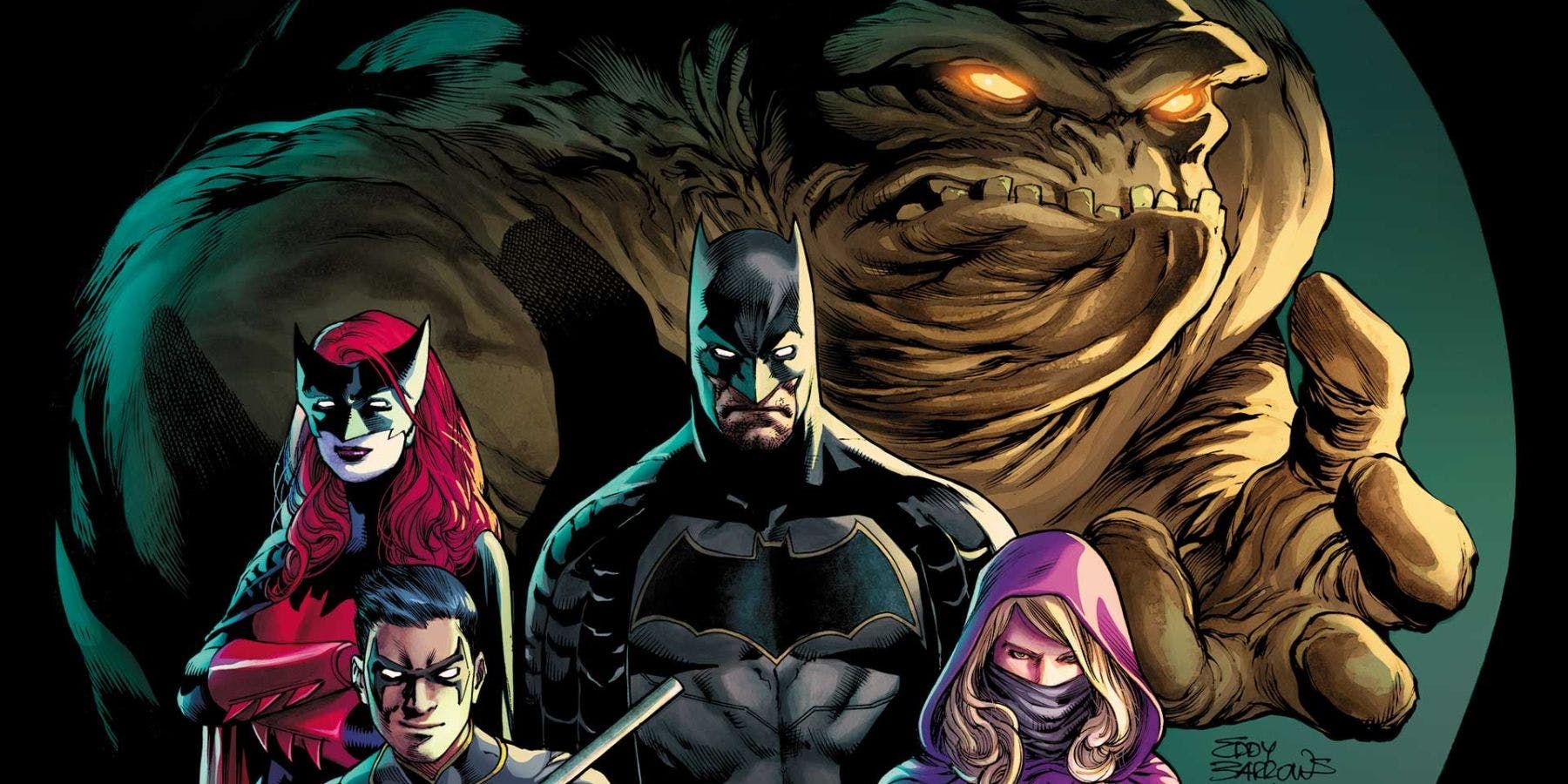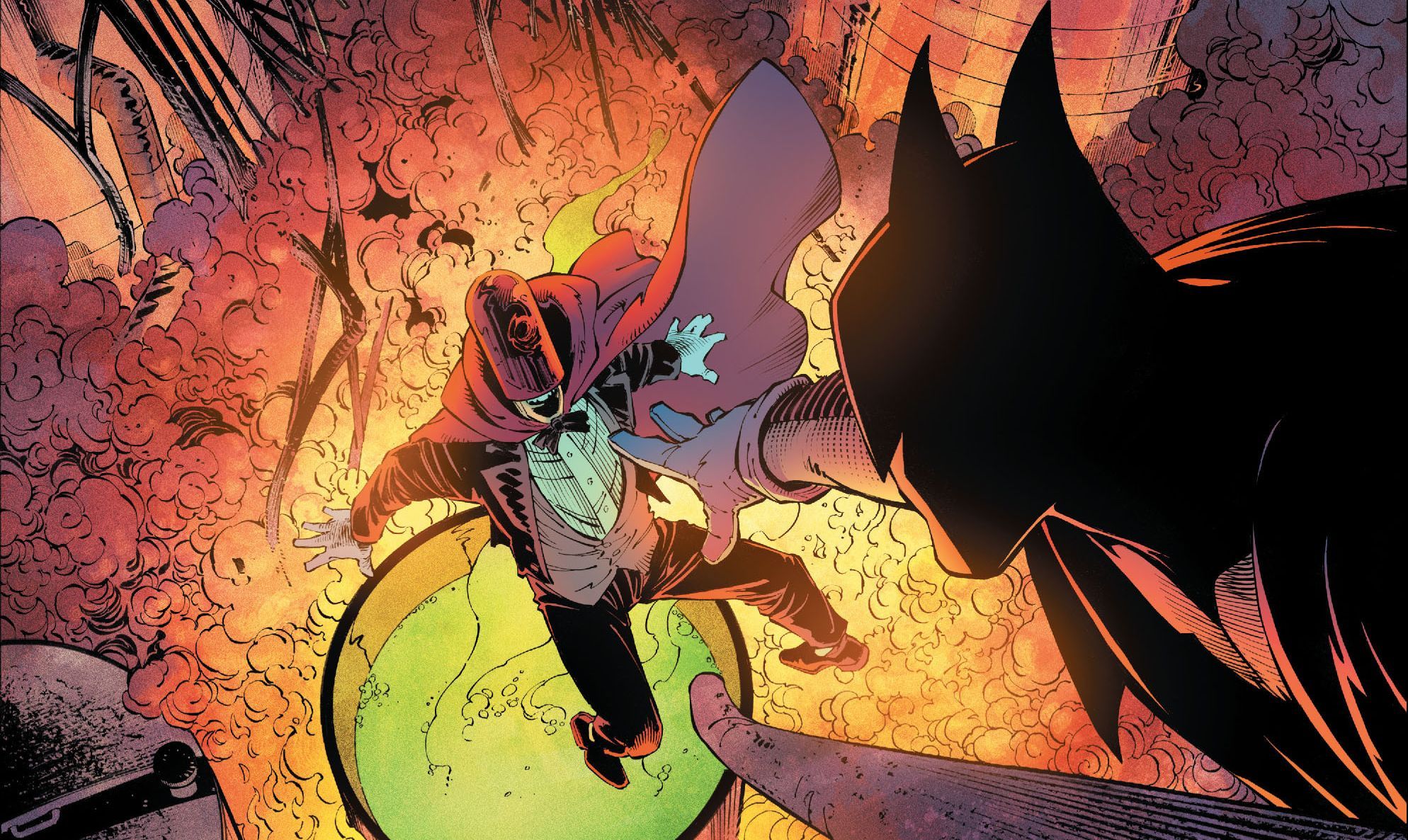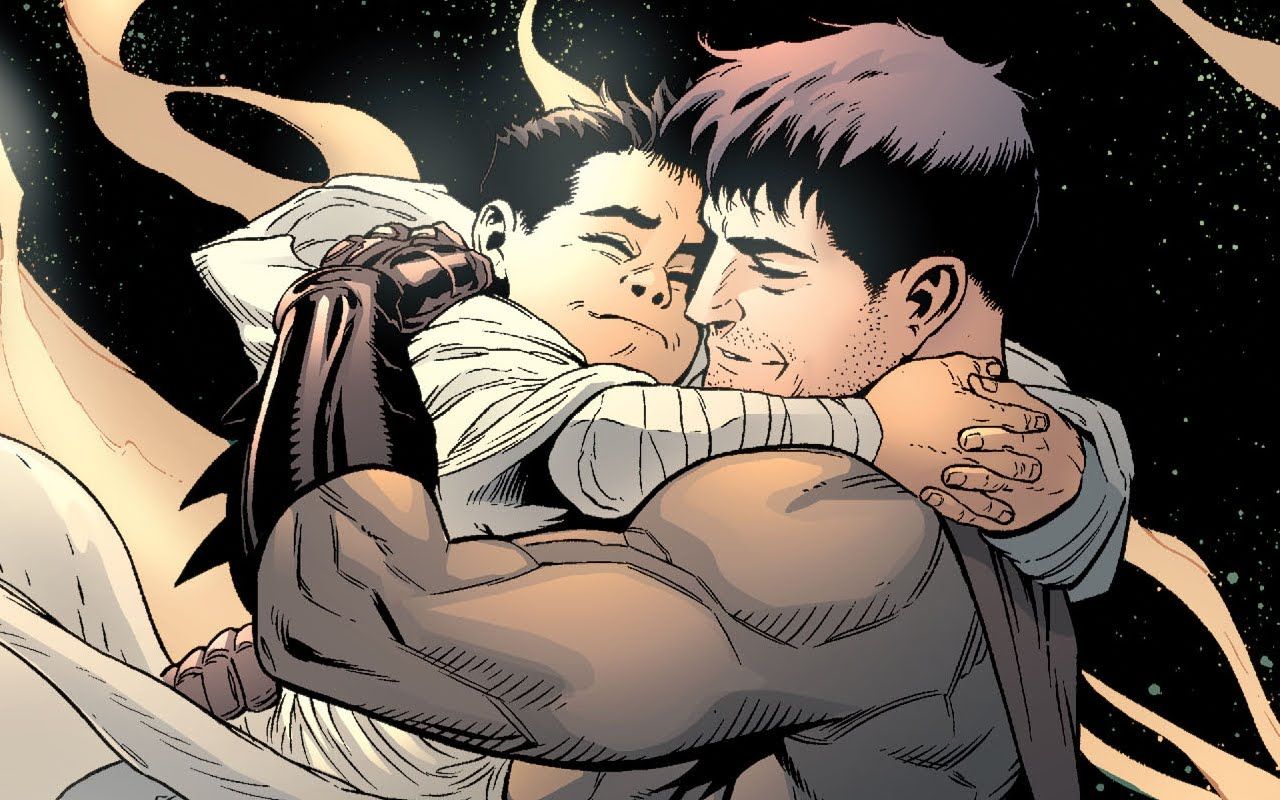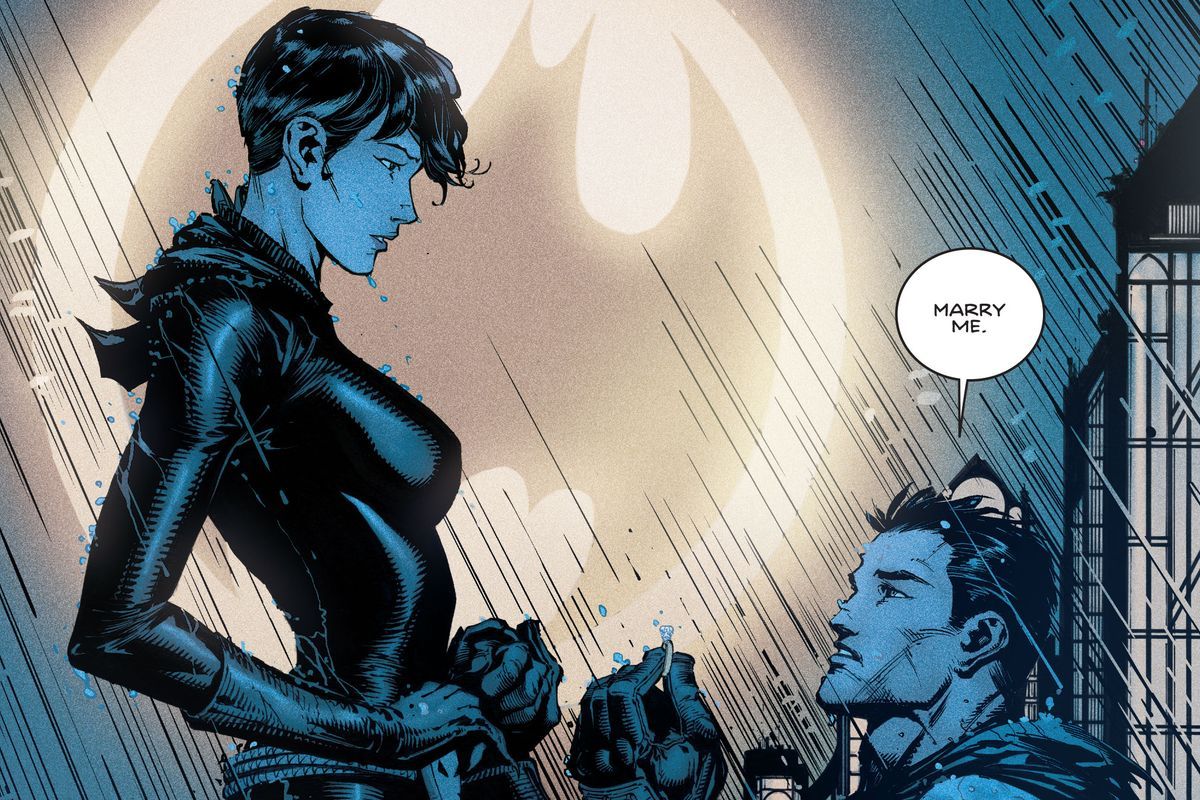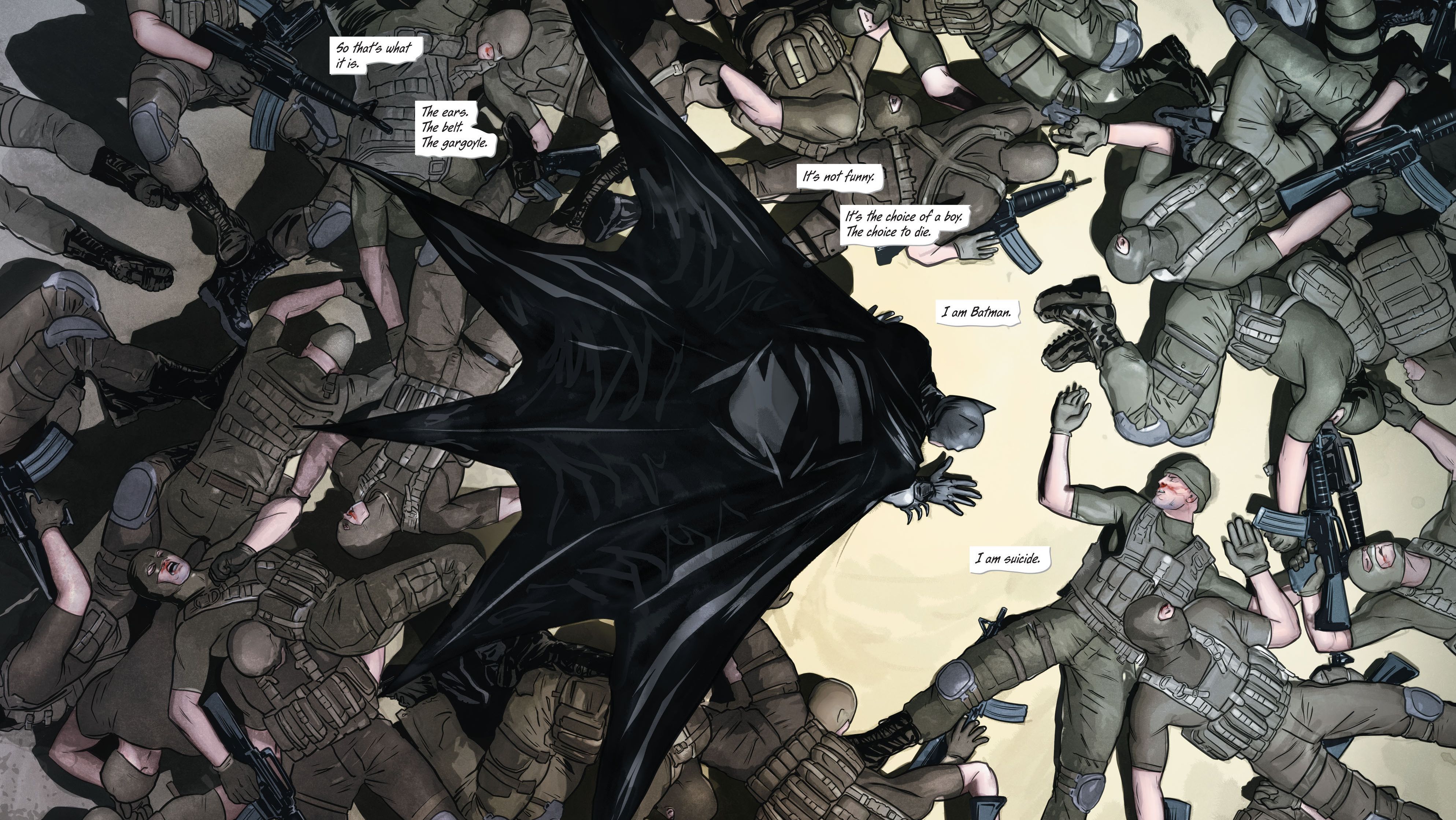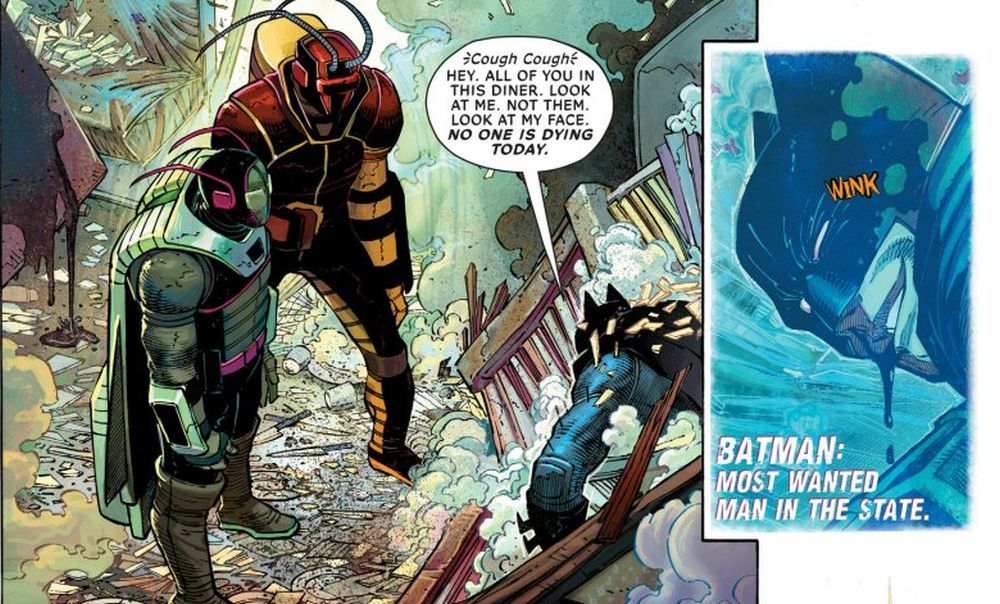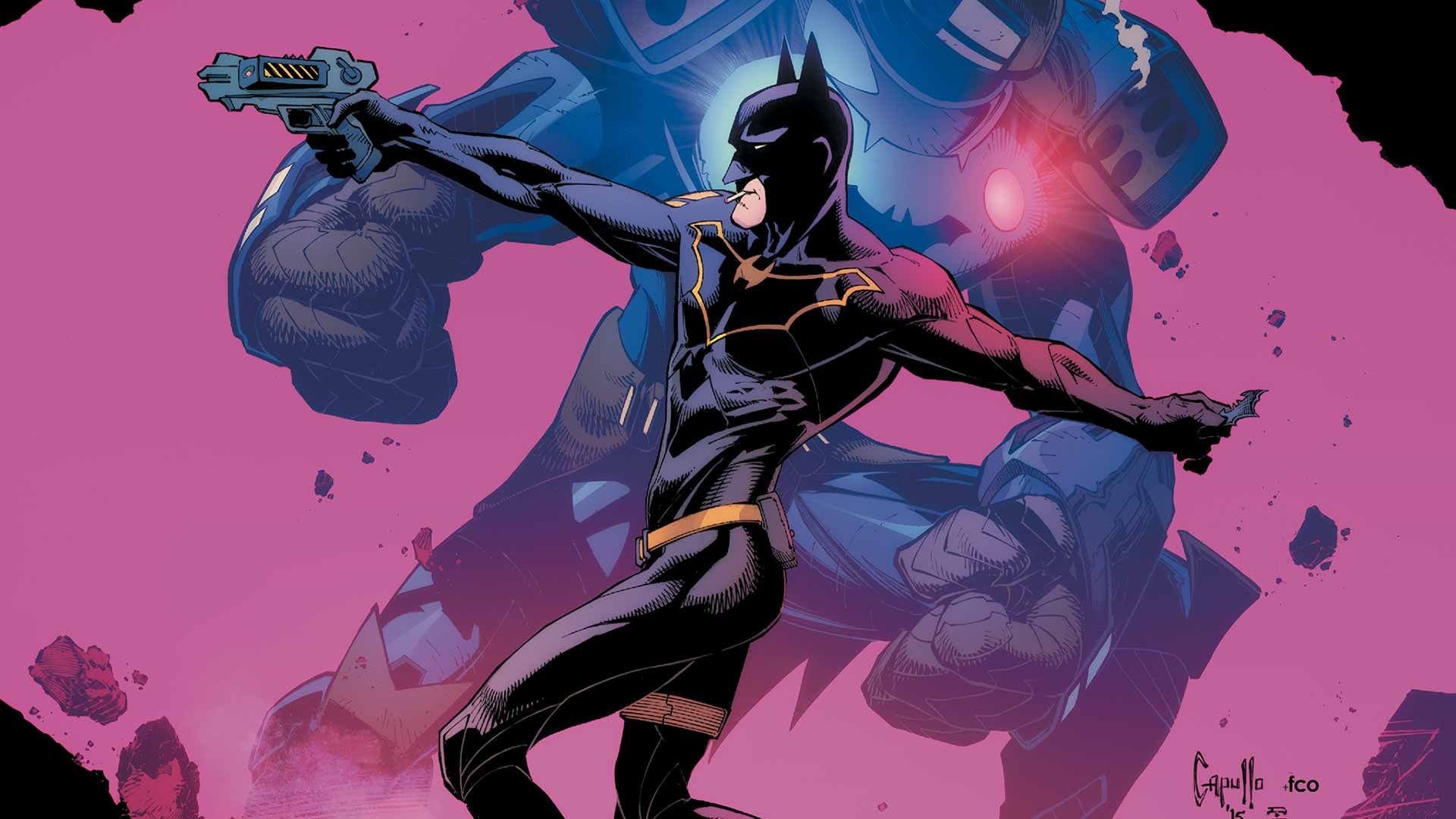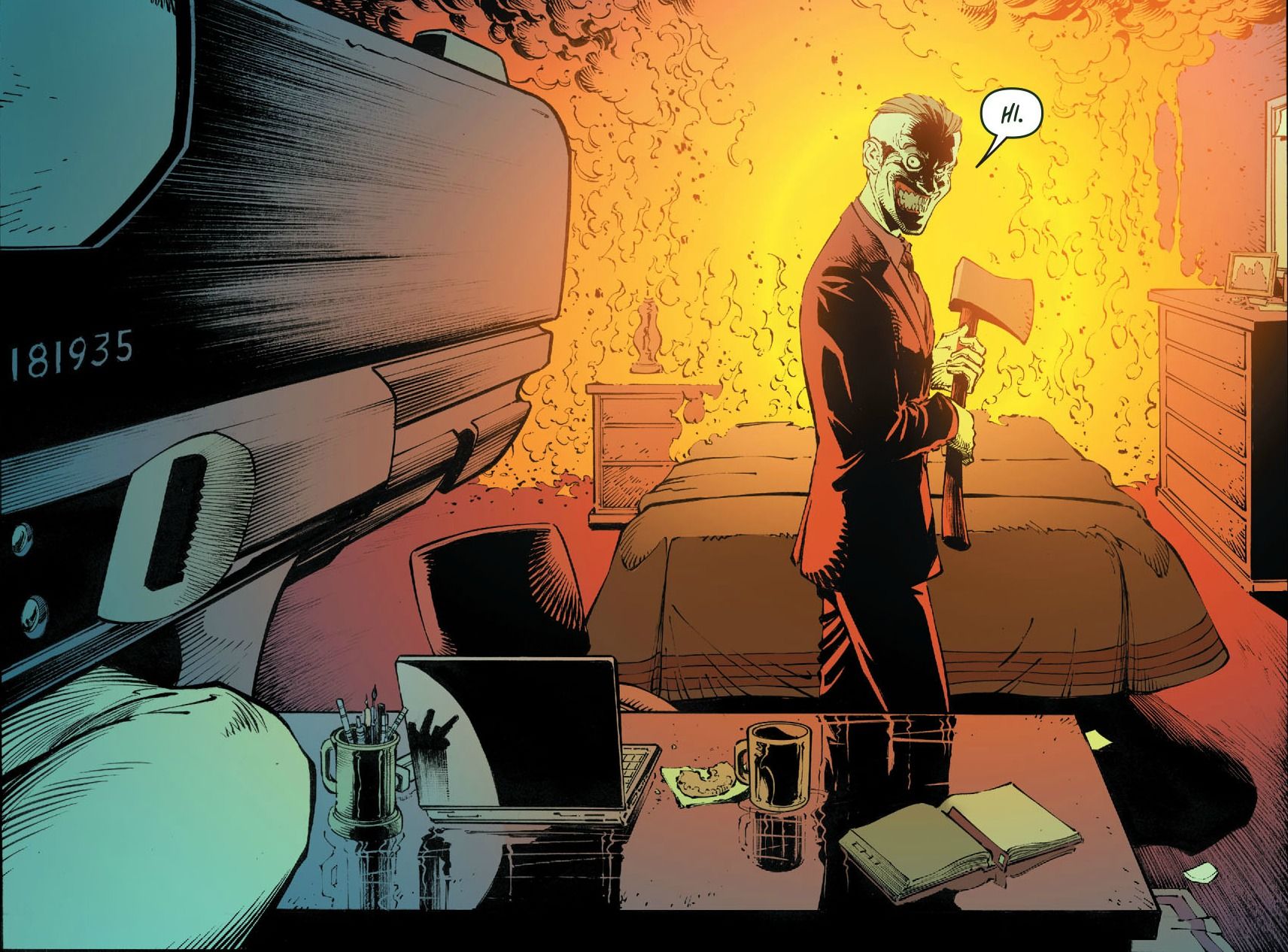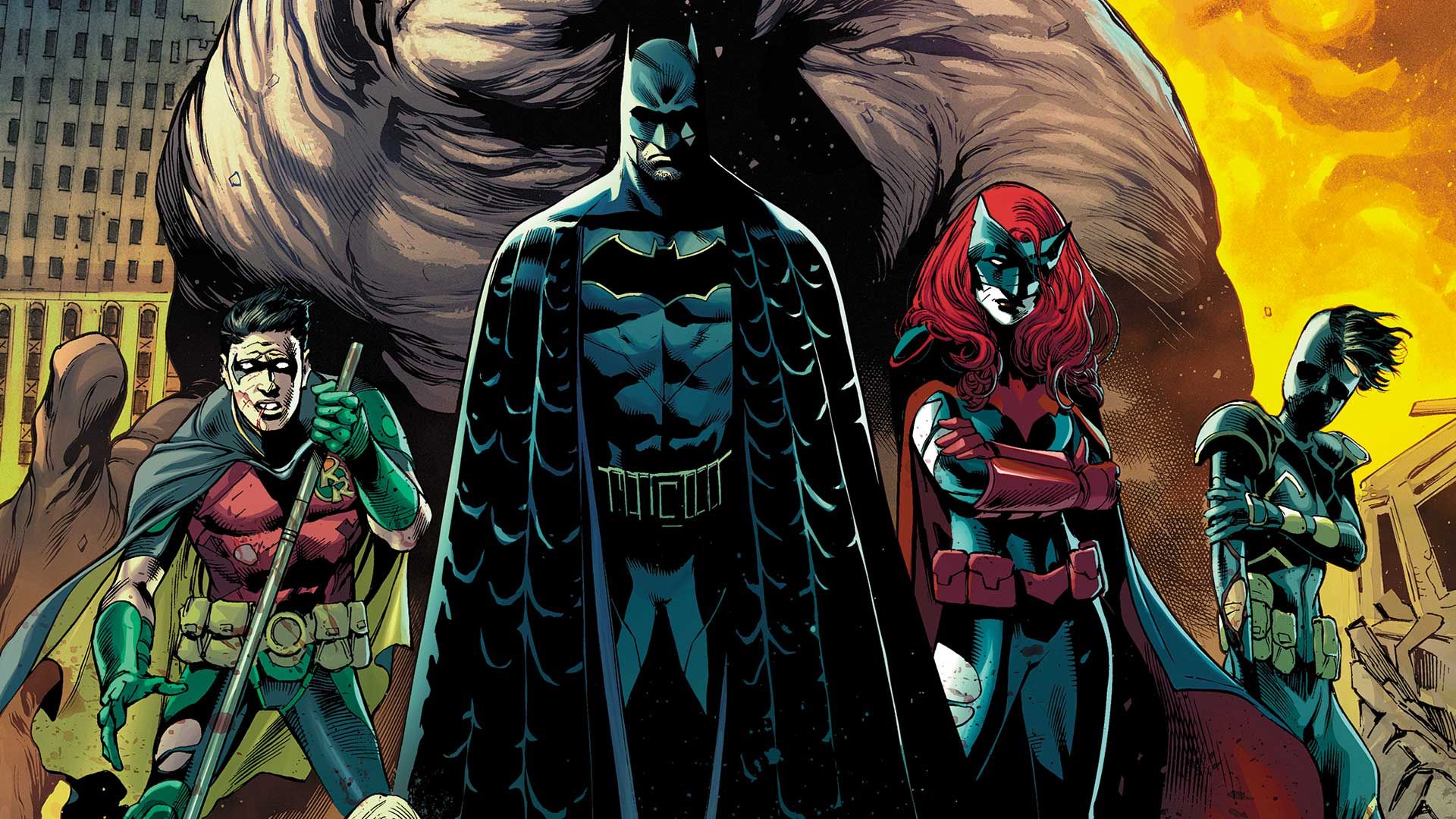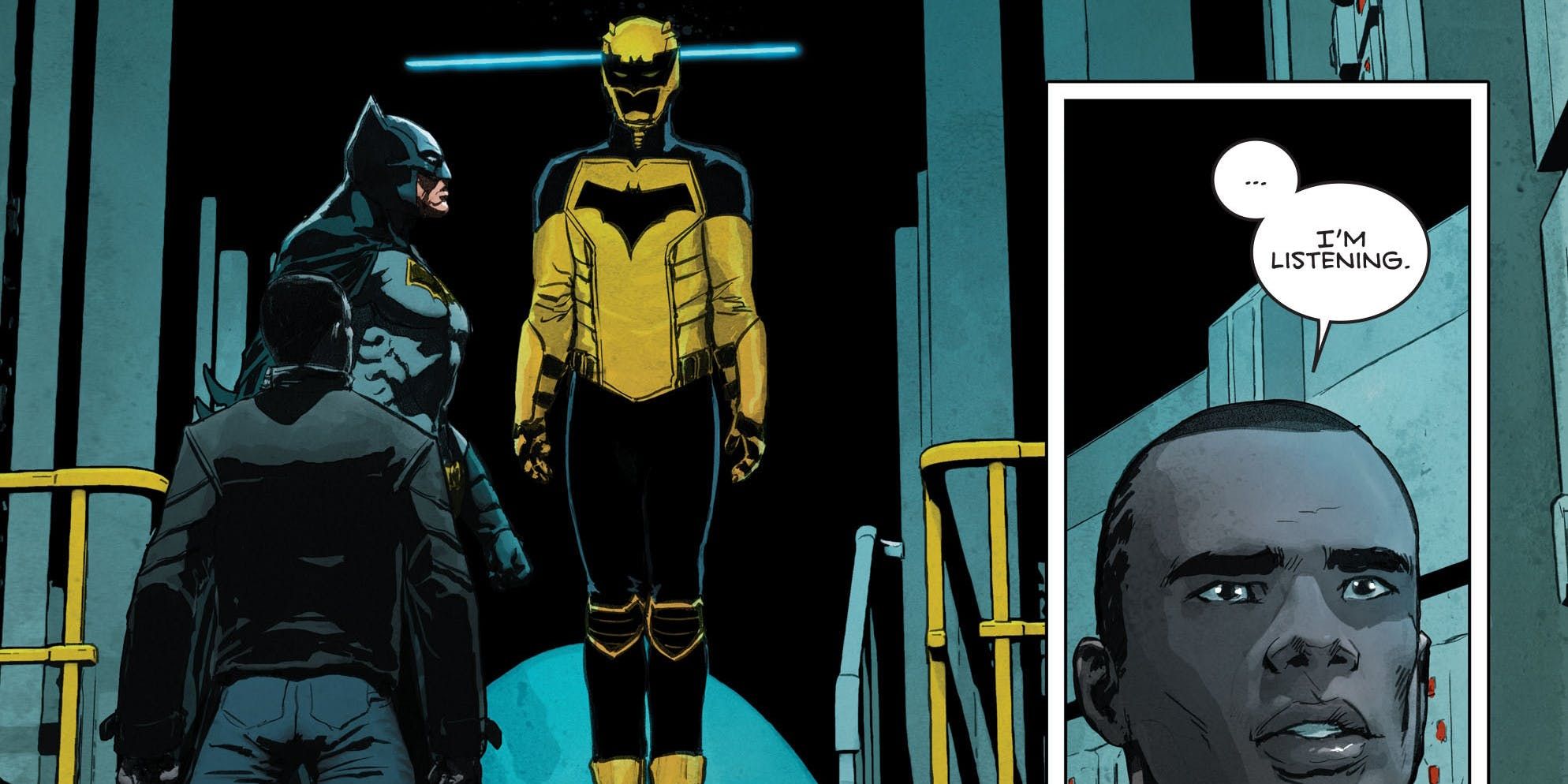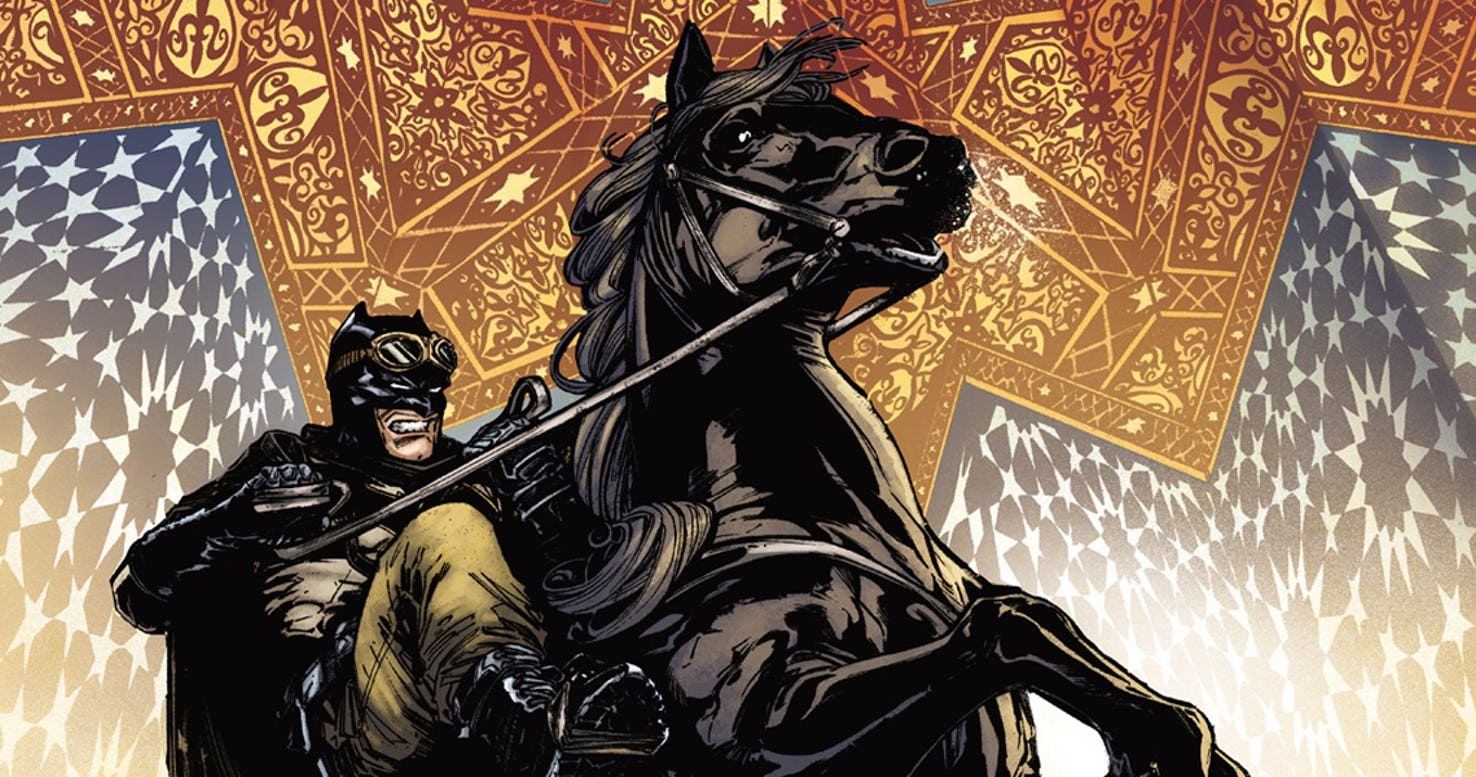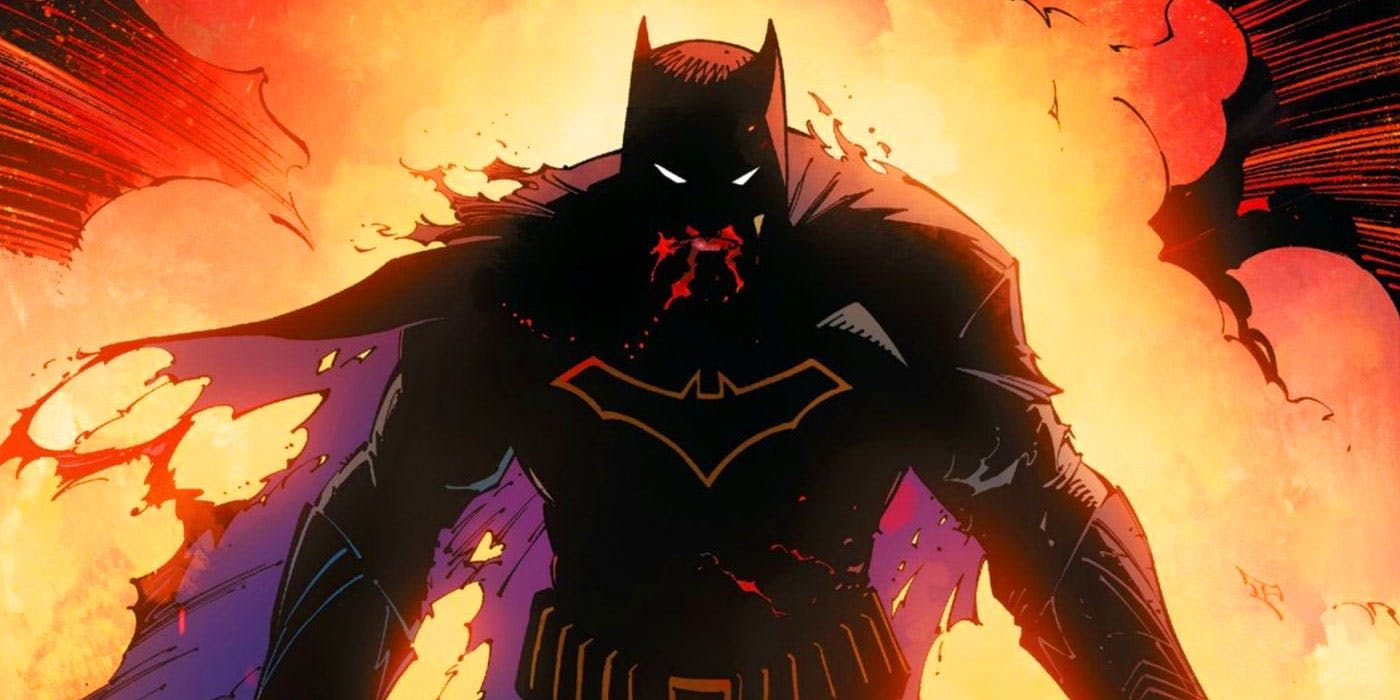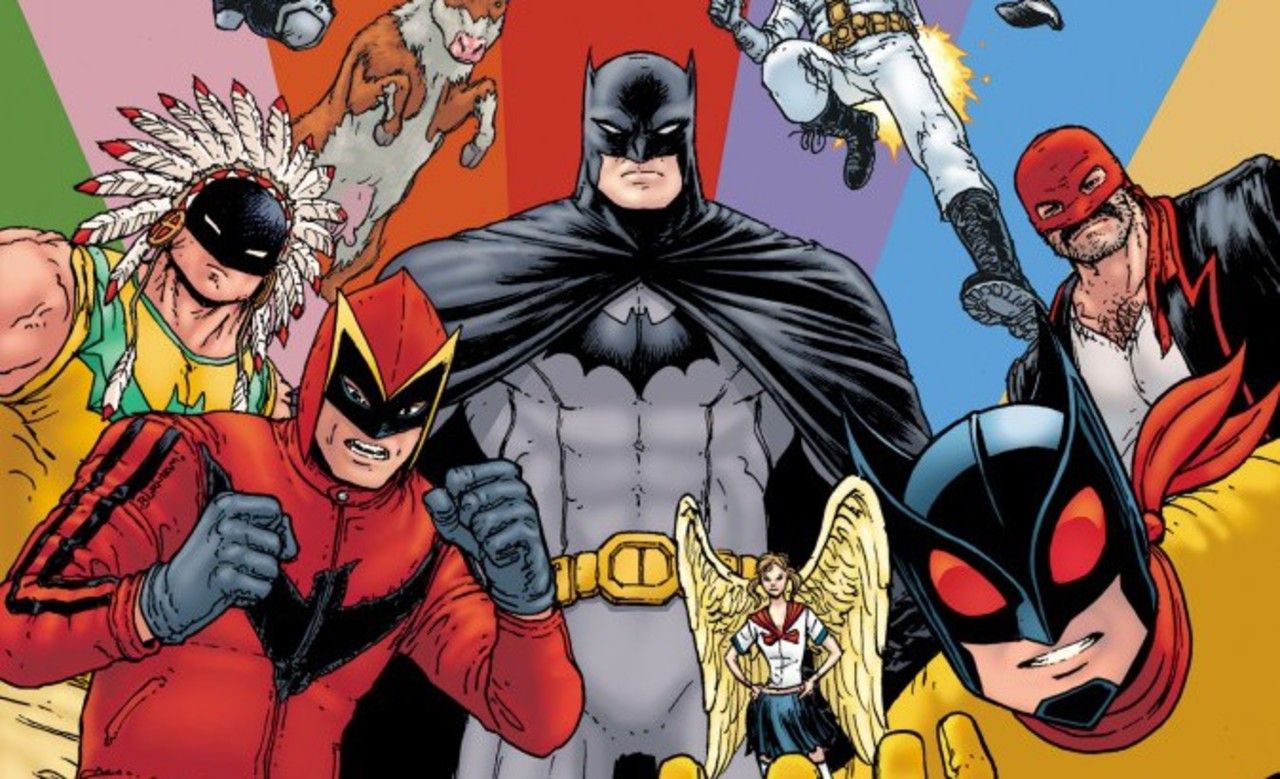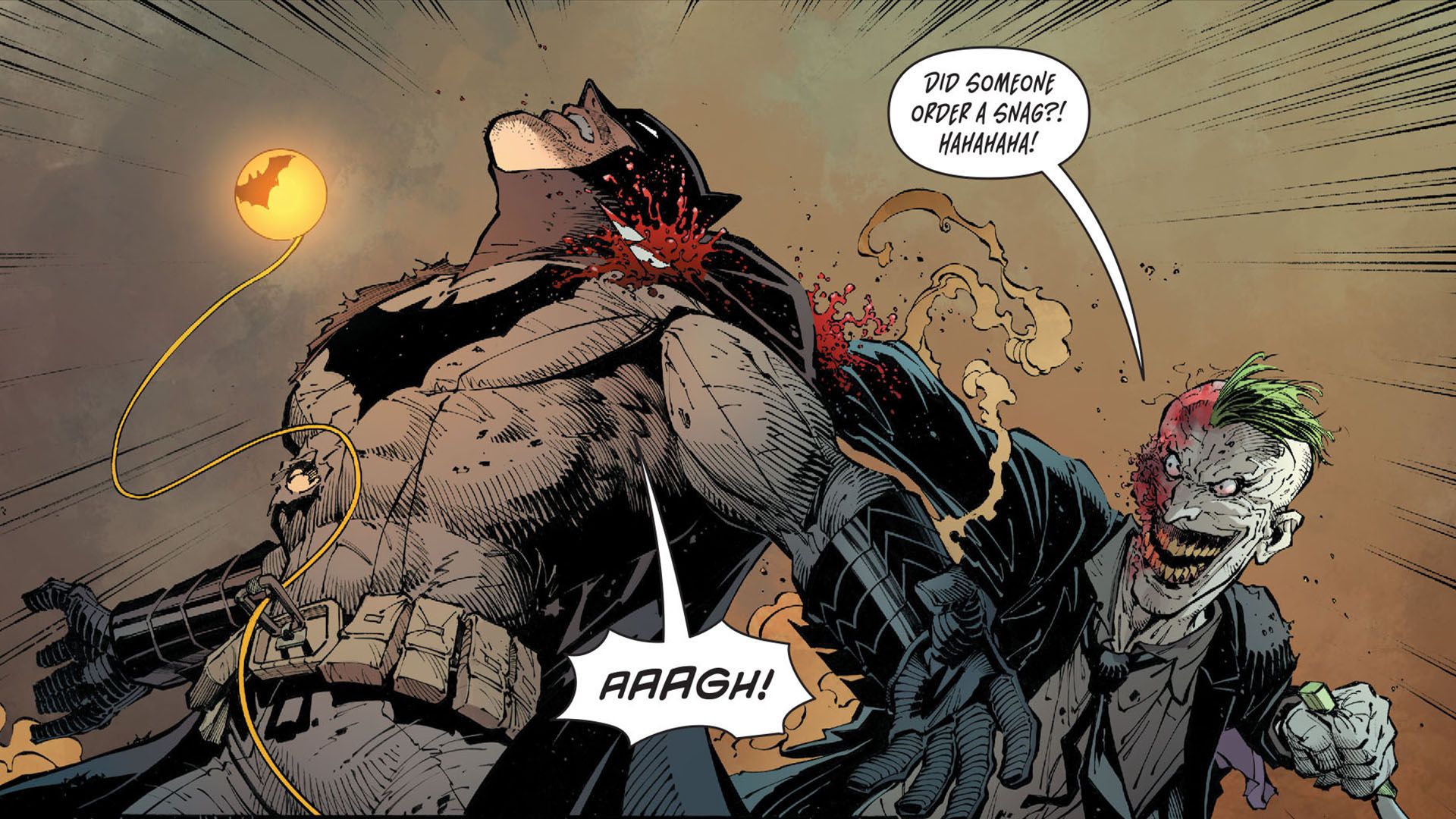If you've been reading Batman comics for the past 10 years and change, then you know that the Dark Knight is going through a bit of a new Golden Age of storytelling. That's not to say that there weren't really great stories being told about the Caped Crusader before then, but the way that writers such as Grant Morrison, Scott Snyder and Tom King have modernized the hero for a new audience is a bit of a marvel. Morrison re-introduced forgotten threads from Batman's distant past -- like his son with Talia, his Zur-En-Arrh persona and the Club of Heroes -- and gave them modern twists.
When Scott Snyder and Greg Capullo took over, they created a Batman for a new era at DC Comics. Their Batman was a hero who inspired hope, not just fear, among the citizens of Gotham City. A departure from darker portrayals of the character, Snyder and Capullo's take on Batman was one of epic storytelling and adventure -- a perfect fit for the age of blockbuster superhero movies in Hollywood. Now, Tom King is about to give Batman something that has evaded him throughout his 75+ year career: a wife. Here are all of the other things modern DC has gotten right about Batman... and one thing it has gotten very wrong!
16 BATMAN INSPIRES HOPE
There's a lot to be said about the way Batman has been portrayed in the comics as opposed to the movies in the last 10 years. While the DCEU has been busy trying to figure out how to fix the fascist The Dark Knight Returns-inspired Batman from Batman v Superman: Dawn of Justice (who is now apparently nice and loves making jokes in Justice League), DC Comics has been dishing out stories that have turned the Caped Crusader into a light shining through all the darkness -- especially during the "superheroes-turned-grim" New 52 era that saw heroes like Superman develop a bit of a sharp edge.
The final arc of Scott Snyder and Greg Capullo's Batman run, "Superheavy," was all about how Gotham City needs Batman to inspire hope and goodness within all of its citizens.
He isn't just a hero to many. Batman must also inspire many to become heroes. Punching the bad guys is only half the battle. There must be something after Batman has saved the day. Every time the city is attacked or falls into some sort of crisis situation, Gotham is left to rebuild itself in the aftermath. That job falls to the regular men and women who live in the city. Batman gives them the strength to move forward, but also to rebuild the city just a bit better each time.
15 BRUCE WILL ALWAYS CHOOSE BATMAN
Speaking of "Superheavy," Scott Snyder and Greg Capullo also explored what Bruce's life might have been like if he hadn't become Batman -- or rather if he'd chosen to let the death of his parents go in order to live a "normal" life. (What's normal about being a multi-billionaire, though?) The result was a Bruce Wayne who was ready to settle down with Julie Madison (canonically, Bruce's first love interest) and who enjoyed spending time with the troubled youth of Gotham at an orphanage he was funding. Unencumbered by the weight of being Batman, Bruce even grew a beard!
But there was something bothering Bruce throughout this arc, hints of a past life that were threatening to make their way back up to the surface. While Bruce fought his resurgent memories of becoming the Dark Knight (he'd developed amnesia after his last fight with the Joker in "Endgame"), he eventually learned the truth and decided that Gotham needed him to become Batman again. In the end, Bruce forgoes a happy and domestic life in order to save his city. It's a reminder that Batman's mission, while initially fueled by revenge for the death of his parents, is ultimately selfless. Bruce will always be Batman or die trying.
14 BATMAN TRIES TO REHABILITATE VILLAINS
While Batman is best known for punching villains in the face, such as in the case of Kite Man, who gets punched so often in Tom King's run, he has also tried to save some members of his rogues gallery. With the exception of perhaps the Joker, the Dark Knight of DC's Rebirth era believes that the bad guys can be rehabilitated if he can only tap into the little seed of good that is still inside of them. Rehabilitation is not necessarily an idea you'd associate Batman with, but the process of bringing villains back to the side of good has become more of an M.O. for the Bat in the last few years.
There's the aforementioned Kite Man, whom Batman recruited to help him stop the bloody war between the Joker and the Riddler. Then there's Clayface, the gruesome baddie who joined a team of crimefighters led by Batman during James Tynion IV's Detective Comics run. (This second one is so, so brilliant!) Batman tried to save Two-Face in Scott Snyder's All-Star Batman, as well, going on a suicidal road trip that almost cost the Caped Crusader his life. And then there's Catwoman, who Batman will marry in July. Granted, the Cat has always been more of an anti-hero, but the Dark Knight went out of his way to clear her name of a series of murder charges lodged against her in order to be with her. That's how you get a significant other to marry you!
13 BATMAN DOESN'T KILL
If all you know about Batman is what you've seen in the movies, you might be confused about this next one. One of Batman's biggest rules -- the one that separates him from the bad guys -- is that he doesn't kill, no matter how easy it would be or how just. That's the one line the Batman won't cross. Christopher Nolan explored this in The Dark Knight when Batman spared Joker's life at the end of the movie, proving that he was the unbreakable force that the Clown could not turn to evil.
Otherwise, the Caped Crusader has murdered dudes left and right since the Tim Burton days.
Who can forget the time Batman strapped a bomb to one of the Penguin's henchmen and walked away as the dude exploded into a billion pieces in Batman Returns? And let's not even talk about all of the people Batman killed in Batman v Superman: Dawn of Justice. He even tried to murder the hell out of Superman with a spear made of Kryptonite. That is insane! The comics continue to show the correct side of Batman, though. He even tried saving the maniacal Red Hood from falling into the vat of chemicals and becoming the Joker in "Zero Year."
12 BATMAN IS A DAD
While many DC fans were happy to forget all about the Batman of Zur-En-Arrh, the Club of Heroes and Mike W. Barr's Son of the Demon back in the late 2000s, Grant Morrison felt that these were all aspects of the Dark Knight's history that should be celebrated. In fact, Morrison went back to find some of the most obscure portions of Batman's career to create the "Black Casebook," with which he crafted the hero's modern stories. One of those stories, one that came MUCH later than the '60s tales that inspired much of Morrison's run, was Son of the Demon in which Batman learns that Talia al Ghul is expecting his child.
Barr's tale ends with Talia hiding the baby away from Batman, ultimately forgotten to the world until Morrison decided to bring the baby back in the form of Damian Wayne. Suddenly, Batman finds himself as a father. It could almost be a comedy if it weren't for the fact that Damian is more of a bloodthirsty al Ghul than a scrappy Wayne boy. Since then, Batman's journey as a father has allowed Morrison, as well as quite a few other writers, including the great Peter J. Tomasi and Patrick Gleason, to explore stories about what parenthood means to the biggest loner in the DC Universe.
11 BATMAN CAN FALL IN LOVE
Tom King's run isn't the first time Batman has fallen in love or even gotten married. In fact, Bruce and/or Batman have been tied the knot for decades with different female characters, whether it be in an alternate universe or some other wacky situation -- but never has the possibility of marriage been taken more seriously than in the Rebirth era. It all happened in the story "Every Epilogue Is a Prelude." Bruce met Selina on their favorite rooftop and got down on one knee, shocking both the Cat and the world. The "Yes" wouldn't actually come until a few issues later, but this was a big event all the same.
The Batrimony (as DC is calling it) will bring with it one of the most important changes to the character in the last 10 years. When you think of Batman, you often think of a man who has trouble connecting with people, especially when it comes to trusting others. He can be paranoid and secretive. He never puts his life as Bruce Wayne first and NEVER lets a personal relationship get in the way of his mission. So the fact that Batman is opening up to Catwoman of all people is a HUGE deal and opens up tons of story possibilities, just like when he became a father.
10 BATMAN'S LOWEST POINT
Batman never gives up. When the Dark Knight meets his end, it'll be because he's been killed stopping one crisis or other. There have been many endings written for the character and most of them are violent. (Tom King wrote one in Batman Annual #2 that's quite peaceful, actually.) That's because the Batman will never stop fighting, even when faced with incredible odds, such as an evil Bat-God who has taken over the world. He'll one day face an inescapable situation and die for it.
In King's "I Am Suicide" arc, it's revealed that Bruce once tried another solution to ending the pain over the death of his parents.
Yet, Bruce seems to be at peace with that. He certainly is as he stands on the roof of a plane seconds before it crashes into Gotham in Batman Vol. 3 #1. Or as he's sent to death after death in the surreal Batman Vol. 2 #49. Why? Because, to become Batman, he first had to suffer a death. In King's "I Am Suicide" arc, it's revealed that Bruce once tried another solution to ending the pain over the death of his parents: suicide. It's a stunning revelation, a missing puzzle piece that puts into context what finally set Bruce out on his mission to become the Dark Knight. It's an unexpected tweak to the origin story that shows that he is fallible and that he had to learn to keep fighting by trying to give up first.
9 BATMAN HAS A SENSE OF HUMOR
Here's one you don't hear every day: Batman actually has a pretty great sense of humor. With the right writer, he can be downright hilarious. And we don't mean Adam West's Batman, either. That's honestly just a spectacular '60s parody of the character. In modern DC comics, Batman delivers a more subtle brand of humor. No writer has written a funnier Batman than Scott Snyder in the last 10 years. It's not that the Caped Crusader is just walking around telling jokes around Gotham. Batman is just so amazing that some of his scenes are inherently hilarious.
Who can forget his line to Jim as he returned from the dead in Batman Vol. 2 #50: "Hello, Jim. Who died and made you Batman?" And then there's infamous scene in "Death of the Family" where he punches a horse as he makes his way through a Joker-controlled Arkham Asylum. He also fought lions in "Zero Year" and hit someone with an artificial flamingo in All-Star Batman. The latter series saw Batman at his most hilarious, actually. There's one scene in that book where Batman equips a chainsaw to fight Killer Moth and Black Spider. The panel where he's holding the chainsaw while his face is covered in shadow is at once terrifying, legendary and really funny. After he gets done with Black Spider, he gives Killer Moth a threatening look, which sends the villain running for his life. The point is that Batman can, and should, be funny sometimes.
8 NO ONE ELSE CAN TRULY BE BATMAN
When Bruce died in Scott Snyder and Greg Capullo's "Endgame," it left a Batman-shaped void in Gotham City. Then Powers International, one of Gotham's most powerful corporations, had the brilliant idea to recruit a new Batman, sanctioned by both the GCPD and the Mayor's office, to replace the beloved vigilante. The result was Jim Gordon giving up cigarettes and cutting his hair into a mohawk. First revealed as a man in a giant, anime-inspired mech suit, we later got to see Gordon in the sleek threads of the all-new Batman.
This was supposed to be the dawn of a new era for Gotham, but Gordon got way more than he'd bargained for when a new villain known as Bloom arrived to poison the mind of the city. Ultimately, the tale told in "Superheavy" was less about Gordon and more about why only Bruce can truly be Batman. No other person will do. Batman isn't really a legacy superhero like The Flash or Green Lantern. While we might see Dick Grayson or Gordon in the cowl every once in a while for story purposes, it's Bruce who is destined (and cursed) to be Batman. It's his singular, personal mission. DC does a great job telling that story here.
7 JOKER IS A SUPERNATURAL THREAT
There have been many incarnations of the Joker. Throughout his infamous criminal career, Joker has gone from murderer to thief to psychopath to the demonic presence created by Scott Snyder in "Death of the Family" and "Endgame." Over the years, DC has done a great job of turning the Joker into something more than just a mass murderer with a love of gags. In his latest appearances, he's a true force of evil, one that might not be birthed from man at all.
Could the Joker actually be something way more hellish? That's what Snyder suggests in "Endgame."
It's revealed that the Joker has been haunting the people of Gotham for decades -- even before Batman was actually a thing. It would also explain why Joker has a new face. After all, he'd asked the Dollmaker to slice it off just a few years before in order to wear it as a mask (it was a metaphor?) in "Death of the Family." If he were a demon, he could easily just reconstruct his own face, right? Of course, we learn later that this is all a fake out, one more gag from the Clown Prince of Crime. The Joker actually discovered a new element known as "dionesium" below Gotham's surface that could heal his wounds and make him new again. But that's beside the point. Making the Joker into something other than a man was a brilliant change that made the villain completely terrifying again!
6 THE BATMAN FAMILY MAKES A GREAT TEAM BOOK
Batman has a pretty extended family at this point. It's pretty incredible, considering that he started out by himself and then only had Robin by his side for a few years. Then Batwoman and Batgirl came along and his family only continued to grow after that, as all his past Robins began to take other superhero roles. Nowadays, there's Nightwing, Robin, Batgirl, Red Hood, Red Robin, Batwoman, Orphan (a retconned Cassandra Cain), Spoiler, Batwing, Azrael, The Signal (Duke Thomas' new superhero identity) and Bluebird (we miss Harper Row). Yeah, there are a lot of people fighting crime in Gotham. One might even say too many.
We're not entirely sure why, but it took DC a really long time to figure out that the Bat-family would make a really great team book. After all, there are so many characters and not enough books to feature them in. So why not team them all up to fight threats that the Batman can't face alone? That was the premise of James Tynion IV's Detective Comics run. Batman and Batwoman led a team of teenagers and 20-somethings in battles against some of the most dastardly organizations operating in Gotham and it was awesome. Tynion, who has been writing Detective since the Rebirth relaunch, is finally stepping away to work on other projects, which means this is probably the end of the team, but what a great idea it was!
5 BATMAN TAKES DUKE THOMAS UNDER HIS WING
One thing that's been missing from Batman comics over the years is characters of color. There are simply not enough of them in Batman's adventures. Lucius Fox has been a mainstay, although he's mostly enjoyed short appearances in the comics (you may remember him best as played by Morgan Freeman in The Dark Knight Trilogy), and now there's his son, Luke, who is currently operating as Batwing. And that was about it...until Scott Snyder introduced Duke Thomas in "Zero Year" as a boy trying to survive in the post-hurricane devastation of Gotham City.
Snyder would continue to develop Duke throughout his run, taking him from boyhood to adolescence, from son to unfortunate orphan (his parents were poisoned by the Joker's laughing gas) to Bruce's new ward. Now, Duke operates as The Signal, Gotham's hero by day -- a role that's surprisingly never really been explored in Batman comics. Who protects Gotham when the sun is out? There's the GCPD, of course, but Gotham could always use a little help. Most importantly, diversity in comics is important. For decades, Batman surrounded himself with white sidekicks and other white allies. It's really great to see a black superhero taking such a prominent role in the Batman mythos. DC has done a good job changing the status quo here.
4 WOMEN ARE FINALLY DRAWING BATMAN COMICS
It may come as a shock to you, but only two female pencillers have ever worked on the main Batman book, which is a darn shame. Heck, too few women have worked on Batman comics, period. The incredibly talented Becky Cloonan became the first woman to draw Batman in 2012. She drew issue #12 of Scott Snyder's run, the story that introduced Harper Row (Bluebird) to the Batman mythos in earnest. Joelle Jones just became the second woman to draw Batman last year. She made her debut on the book in Vol. 3 #33. As you can see from the cover above, the issue is absolutely beautifully drawn. Jones has continued to contribute to Tom King's run for the past few months, making her the first regular artist on Batman.
While this is certainly progress, there's still a lot of room for improvement.
Why hasn't Gail Simone had a run on Batman? What about Kelly Sue DeConnick? Why isn't Fiona Staples drawing Batman? There are plenty of big-time female comic book writers and artists nowadays, yet too few female creators working on Batman. The math just doesn't add up. Luckily, things are starting to change at DC Comics -- not fast enough -- but change is coming all the same, as more female and LGBTQ talent is recruited to work on DC's diverse lineup of books.
3 BATMAN ALWAYS WINS
It's the oldest rule in the book: Batman always wins. There's never a challenge too great or an enemy too fierce. Batman will always think of some way out of a sticky situation. He'll devise a solution to any crisis. You just can't keep the man down. Part of it is his training and his incredible intellect, but the biggest factor in Batman always winning the day is his determination. He will never stop fighting -- not until he's dead, which is usually an advantage he has over the bad guys. As shown in the shocking conclusion of "Endgame," even the Joker doesn't actually want to die. Batman, on the other hand, is on a one-way trip and there's only one ending to his saga.
The advantage a character like Batman has over another superhero like Superman is that he is completely human, entirely fallible. Superman might be the ultimate hero who can't be hurt in most cases and has an unshakeable moral compass, but the fact that Batman can make human mistakes and could die on any given day, makes him much more captivating as a character. The Batman we get in the comics might be incredible but he isn't perfect. Yet, somehow, he always finds a way to get the W.
2 BATMAN GOES GLOBAL
Let's go back to this idea that Batman inspires others to become heroes. It's certainly true of those who walk in the streets of Gotham. His extended Batfamily is a testament to the Dark Knight's influence on the people of his city. But what about those heroes from other countries, who follow Batman's mission on TV or read about it in the papers and decide to do the same for their own communities. That is the subject of Grant Morrison's Batman Incorporated, which he actually first teased in his Club of Heroes arc in his earlier Batman run.
When Batman rises from the dead (or rather, returns from the distant past), he decides to go global with his war on crime. To do this, he recruits a group of international heroes from all over the world to represent him in different countries. The heroes include Knight and Squire (UK), Blackbat (China), Nightrunner (France), Mr. Unknown (Japan), Batwing (Congo), El Gaucho (Argentina), The Hood (UK), Chief Man-of-Bats and Raven Red (Sioux Nation), Dark Ranger (Australia), Wingman (Gotham) and the Batman of Moscow. There's even a Bat Cow! Yeah, Batman Incorporated was pretty awesome. Let's hope another writer revisits the idea sometime soon!
1 BATMAN DOESN'T NEED TO DIE SO OFTEN
Okay, so here's the one thing modern DC totally gets wrong about Batman: he doesn't need to die so often. When DC announced that Grant Morrison was working on a story called "Batman R.I.P." it was a BIG deal. Why? Batman was one of the few DC heavyweights who had never truly died (it actually turns out he still hasn't). So the prospect of his death became a highly anticipated comic book event. Morrison pulled a heck of a fake out with this story, of course. But then he decided to "kill off" Bruce anyway in Final Crisis during a fight with Darkseid.
This is starting to get a bit ridiculous.
That's all well and good. Bruce stayed "dead" for a little while (he was actually stuck in the past and fighting his way back to the present) and Dick Grayson took over. But this wasn't the kind of big shift that you might see in the pages of The Flash when Wally West took over for the deceased Barry Allen for decades. Bruce returned to life and donned the cowl once again. Of course, just a few years later, he was "dead" once again at the hands of Scott Snyder and Greg Capullo. And then Tom King teased Batman's death once more just a year or so later in his run. This is starting to get a bit ridiculous. If you're not actually going to kill Bruce, stop pretending that you are!

